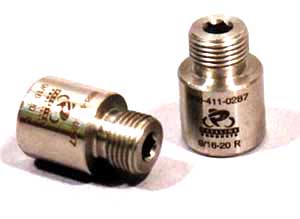Apparently, the story was that Grant was having knee problems on his mountain bike. When he thought about why that might be, he figured his cranks were wider on his mountain bike than on his road bike, pictured riding with legs splayed out exaggeratedly to the sides, and came up with "narrower is better". There's a loosely used term in many industries called a q-factor, which is usually used to describe some unknown or unpredictable element. Grant nicked the name, came out with his idea, and it kept everyone quite busy for a number of years trying to determine if the idea was sound or not, and more importantly, if it would sell cranks or not.
Bill Mcready, the founder of Santana, really has a ball with Q-Factor discussion. He was involved in many experiments and tests to determine the physiological impact of the q-factor, in an attempt to come to some sort of peak-efficiency fit-formula. The q-factor is actually a pretty thoroughly tested theory. Ultimately, the American companies got together with a Swiss laboratory and many hundreds of thousands of dollars, and formulated a project to determine the most advantageous BB width formula. Strangely, they found zero effect to power output or efficiency within the range of available crank/BB sets on the market. They had to go several inches wider before any discernable effect was aparrent. Going too narrow (unrealistically narrow, as you'd only ever find on the testing rig), was the closer danger zone, but had more to do with decreased lateral balance & the effect it had on the smoothness of the stroke. The test was repeated again. And again. Every couple years, someone would devise a new test, and every time, the results were the same. Eventually, mfgs simply gave up on the idea of a golden formula. Marketing departments, however, need technical sounding buzzwords to put in catalogues, and Q-Factor really stuck. It did, and still does help sell cranks. Understandably, the companies that paid all that money for tests weren't exactly anxious to come out and give away their results. So the q-factor has escalated into some weird legend/myth to be renounced by those who actually took it seriously enough to test, and to be believed in by anyone who wasn't.





